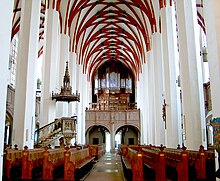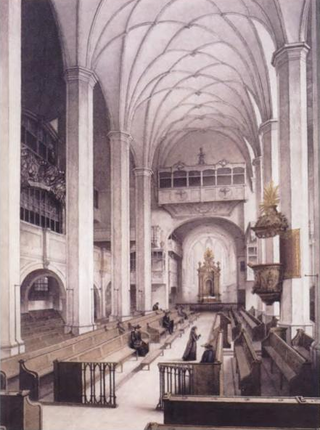
Ach Gott, wie manches Herzeleid, BWV 3, is a church cantata by Johann Sebastian Bach. He composed the chorale cantata in Leipzig for the Second Sunday after Epiphany and first performed it on 14 January 1725. It is based on the hymn published by Martin Moller in 1587.
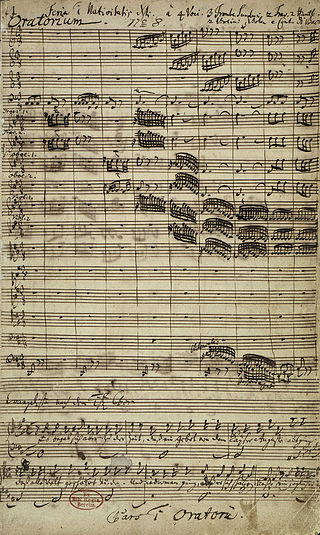
The Christmas Oratorio, BWV 248, is an oratorio by Johann Sebastian Bach intended for performance in church during the Christmas season. It is in six parts, each part a cantata intended for performance in a church service on a feast day of the Christmas period. It was written for the Christmas season of 1734 and incorporates music from earlier compositions, including three secular cantatas written during 1733 and 1734 and a largely lost church cantata, BWV 248a. The date is confirmed in Bach's autograph manuscript. The next complete public performance was not until 17 December 1857 by the Sing-Akademie zu Berlin under Eduard Grell. The Christmas Oratorio is a particularly sophisticated example of parody music. The author of the text is unknown, although a likely collaborator was Christian Friedrich Henrici (Picander).
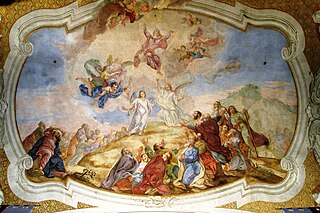
Lobet Gott in seinen Reichen, BWV 11, known as the Ascension Oratorio, is an oratorio by Johann Sebastian Bach, marked by him as Oratorium In Festo Ascensionis Xsti, composed for the service for Ascension and probably first performed on 15 May 1738.
Johann Sebastian Bach composed the church cantata Wär Gott nicht mit uns diese Zeit, BWV 14, in Leipzig in 1735 for the fourth Sunday after Epiphany and first performed it on 30 January 1735, a few weeks after his Christmas Oratorio. The cantata, in Bach's chorale cantata format, is based on Martin Luther's hymn "Wär Gott nicht mit uns diese Zeit". Its text paraphrases Psalm 124, focussing on the thought that the believers' life depends on God's help and is lost without it.

The cantatas composed by Johann Sebastian Bach, known as Bach cantatas, are a body of work consisting of over 200 surviving independent works, and at least several dozen that are considered lost. As far as known, Bach's earliest cantatas date from 1707, the year he moved to Mühlhausen, although he may have begun composing them at his previous post in Arnstadt. Most of Bach's church cantatas date from his first years as Thomaskantor and director of church music in Leipzig, a position which he took up in 1723.

Ach Gott, wie manches Herzeleid, BWV 58, is a church cantata by Johann Sebastian Bach. He composed the dialogue cantata in Leipzig for the Sunday after New Year's Day.

Jesu, nun sei gepreiset, BWV 41, is a church cantata by Johann Sebastian Bach. He composed the chorale cantata in Leipzig for New Year's Day and first performed it on 1 January 1725 as part of his second cantata cycle. It is based on the hymn by Johannes Hermann (1591).

Unser Mund sei voll Lachens, BWV 110, is a church cantata by Johann Sebastian Bach. He composed the Christmas cantata in Leipzig for Christmas Day and first performed it on 25 December 1725.

Gott, man lobet dich in der Stille, BWV 120.1, is a sacred cantata by Johann Sebastian Bach. He composed it in Leipzig for the occasion of Ratswechsel, the inauguration of a new town council in a church service, probably before 1730. Parts of the cantata appeared in a wedding cantata and a cantata commemorating the Augsburg Confession in 1730. Bach reworked the choral second movement for the Symbolum Nicenum of his Mass in B minor.

Schauet doch und sehet, ob irgend ein Schmerz sei, BWV 46, is a church cantata by Johann Sebastian Bach. He composed it for the tenth Sunday after Trinity and it was first performed on 1 August 1723 in Leipzig.
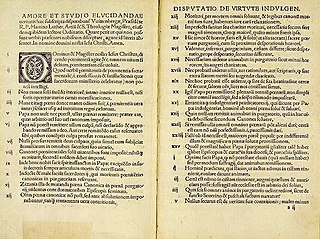
Johann Sebastian Bach composed the church cantata Gott der Herr ist Sonn und Schild, BWV 79, in Leipzig in 1725, his third year as Thomaskantor, for Reformation Day and led the first performance on 31 October 1725.

Lobe den Herrn, meine Seele, BWV 69, also BWV 69.2, is a cantata by Johann Sebastian Bach.

Singet dem Herrn ein neues Lied, BWV 190, is a church cantata by Johann Sebastian Bach. He wrote it in Leipzig for the New Year's Day and first performed it on 1 January 1724 as part of his first cantata cycle. He adapted it in 1730 to Singet dem Herrn ein neues Lied, BWV 190a, for the celebration of the bicentennial of the Augsburg Confession.
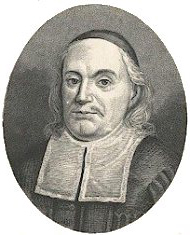
Ich hab in Gottes Herz und Sinn, BWV 92, is a cantata by Johann Sebastian Bach for use in the Lutheran service. He composed the chorale cantata in Leipzig for Septuagesimae and first performed it on 28 January 1725. It is based on the hymn "Ich hab in Gottes Herz und Sinn" by Paul Gerhardt (1647), and is the only chorale cantata Bach based on a hymn by Gerhardt.

Zerreißet, zersprenget, zertrümmert die Gruft or Der zufriedengestellte Aeolus, BWV 205.1, BWV 205, is a secular cantata or dramma per musica by Johann Sebastian Bach. It was written for the name day of August Friedrich Müller, and was first performed on 3 August 1725. The libretto by Picander is based on Greek mythology.

Liebster Immanuel, Herzog der Frommen, BWV 123, is a church cantata by Johann Sebastian Bach. He composed the chorale cantata in Leipzig for Epiphany and first performed it on 6 January 1725. It is based on the hymn by Ahasverus Fritsch (1679).

Ich bin vergnügt mit meinem Glücke, BWV 84, is a church cantata by Johann Sebastian Bach. He composed the solo cantata for soprano in Leipzig in 1727 for the Sunday Septuagesima, and led the first performance, probably on 9 February 1727.
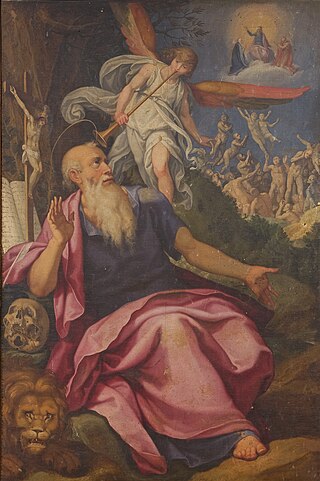
Herr Jesu Christ, wahr' Mensch und Gott, BWV 127, is a cantata by Johann Sebastian Bach for use in a Lutheran service. He composed the chorale cantata in 1725 in Leipzig for the Sunday Estomihi, the Sunday before Lent. It is based on Paul Eber's 1582 hymn in eight stanzas "Herr Jesu Christ, wahr Mensch und Gott". Bach first performed it on 11 February 1725.
Gott ist unsre Zuversicht, BWV 197.2, is a church cantata by Johann Sebastian Bach.

Jauchzet, frohlocket! Auf, preiset die Tage, BWV 248I, is a 1734 Christmas cantata by Johann Sebastian Bach that serves as the first part of his Christmas Oratorio. Bach was then Thomaskantor, responsible for church music at four churches in Leipzig, a position he had assumed in 1723. For the oratorio, the libretto by an unknown author followed the nativity of Jesus from the Gospel of Luke, interspersed with reflecting texts for recitatives and arias, and stanzas from Lutheran hymns.
